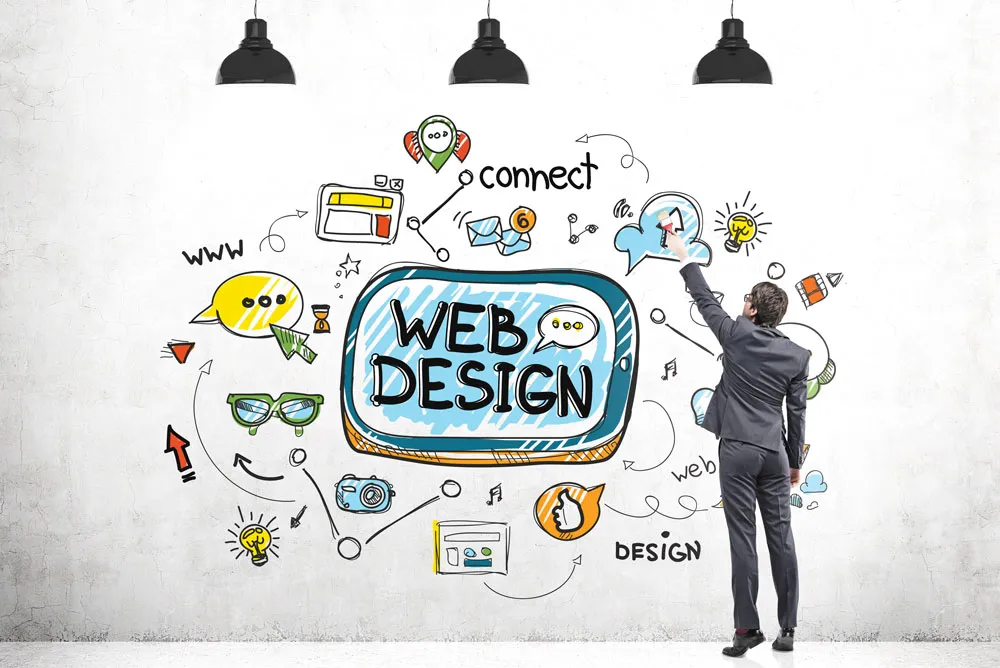Vital Concepts of User-Centric Web Layout for Optimum Engagement
In the world of web design, user-centric principles serve as the cornerstone for cultivating interaction and satisfaction. By focusing on customer requirements, enhancing usability, and making certain access, developers can create experiences that reverberate with varied audiences. The trip towards optimal interaction does not finish right here; continuous user feedback is vital for fine-tuning these concepts.
Understanding User Demands
Comprehending individual requirements is basic to developing reliable website design that reverberate with target market. A comprehensive comprehension of individual needs makes it possible for developers to craft experiences that are not only practical but additionally engaging. This process begins with extensive research methods, including customer meetings, surveys, and analytics, which aid to identify the certain preferences, actions, and discomfort points of the target market.
Furthermore, compassion plays an important function in understanding user requirements. By tipping right into the customers' shoes, developers can better anticipate their expectations and develop tailored services that resolve their problems - Web design in Penang. Building user personas, which envelop the features and motivations of typical individuals, can even more guide style choices and ensure alignment with individual top priorities
Furthermore, contextual inquiry allows developers to observe users in real-world settings, providing insights into how they engage with existing systems. This qualitative information can inform design models that boost customer contentment. Inevitably, a user-centered approach, based in a deep understanding of customer needs, not only boosts functionality however also promotes commitment and trust, resulting in enhanced engagement and enhanced overall user experience.
Prioritizing Use

Furthermore, the relevance of comments can not be overemphasized. Customers need to obtain prompt, clear feedbacks to their actions, such as kind submissions or button clicks, aiding them comprehend the end results of their communications. This feedback develops trust and motivates continued interaction.
Furthermore, it is critical to carry out usability testing during the design process. Observing genuine individuals as they communicate with the website can disclose pain factors and locations for renovation. Iterative layout based upon individual comments not just fine-tunes functionality yet likewise aligns the website more carefully with customer expectations. Inevitably, prioritizing usability promotes a user-centric method that drives engagement and boosts the overall effectiveness of the web experience.
Guaranteeing Accessibility

To accomplish availability, designers ought to comply with developed guidelines such as the Web Material Accessibility Standards (WCAG) These guidelines emphasize the relevance of offering text choices for non-text material, guaranteeing enough comparison between message and background shades, and making it possible for key-board navigation for all interactive aspects (Web design in Penang). In addition, clear and succinct language should be made use of to aid understanding
Integrating accessibility functions not only advantages people with impairments but see this page additionally enhances overall individual experience. For instance, display readers can assist customers in browsing content effectively, while captions and records make multimedia accessible to those with hearing disabilities. An accessible web site can improve search engine optimization (SEARCH ENGINE OPTIMIZATION), as search engines favor well-structured and straightforward sites.
Inevitably, focusing on availability promotes inclusivity, enabling all users to completely engage with electronic material and making sure that no person is left in the electronic landscape.
Visual and Aesthetic Layout
A well-designed site not only meets access requirements but likewise mesmerizes individuals via its visual and visual aspects. The aesthetic design of a site plays a critical function in creating an engaging user experience. Efficient use color, typography, and imagery can evoke emotions, communicate brand identity, and guide users via the content seamlessly.
Color pattern should be very carefully selected to mirror the brand's personality while maintaining readability and visual comfort. Typography has to be legible and sympathetically integrated into the overall style, making certain that it matches as opposed to distracts from the material - Web design in Penang. Pictures need to be premium and pertinent, serving to boost the message instead than overwhelm it
Whitespace is an additional vital element of visual design. It supplies breathing room, permitting individuals to concentrate on essential components without really feeling cluttered. In addition, consistency in visual layout elements, such as switches and symbols, cultivates knowledge and improves navigation.
Ultimately, a well-executed aesthetic and aesthetic design not only draws in users yet likewise encourages exploration and communication, causing a more gratifying on-line experience. This structure is important for cultivating deeper interaction and developing a long lasting link with the target market.
Constant Individual Feedback
User responses functions as a vital pillar in the development of web design, making certain that the website proceeds to meet the needs and assumptions of its target market. By actively redirected here getting point of views and insights from individuals, designers can uncover useful info that drives renovations and promotes engagement. This iterative procedure not only boosts individual fulfillment but also constructs a feeling of neighborhood and depend on.
To successfully collect continuous individual comments, numerous methods can be employed, including surveys, use screening, and analytics tools. Surveys can give measurable information on individual preferences, while usability screening uses qualitative understandings right into how users connect with the site. Additionally, analytics devices can track behavioral patterns, exposing areas of rubbing that may not be instantly noticeable.
It is vital to examine and focus on comments, attending to high-impact issues that impact customer experience. Interacting updates and changes made in action to customer input reinforces the worth of their contributions, encouraging continuous engagement. Ultimately, a commitment to continual individual feedback not just refines website design however also cultivates a user-centric technique that can dramatically boost engagement and loyalty with time.
Conclusion
In verdict, the essential principles of user-centric web style encompass an extensive understanding of customer requirements, a strong focus on Website functionality, and the combination of accessibility attributes. Constant user feedback further informs layout improvements, making sure that sites remain interesting and reliable.
 Judd Nelson Then & Now!
Judd Nelson Then & Now! Destiny’s Child Then & Now!
Destiny’s Child Then & Now! Elin Nordegren Then & Now!
Elin Nordegren Then & Now! Tonya Harding Then & Now!
Tonya Harding Then & Now! Dolly Parton Then & Now!
Dolly Parton Then & Now!